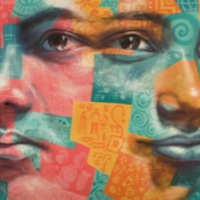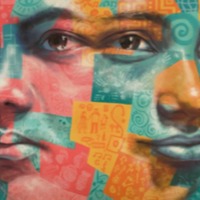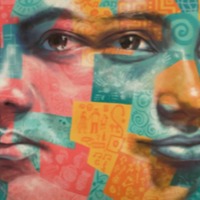
Trishna
The Global Slavery Index 2018 estimates that on any given day there were nearly 8 million people living in modern slavery in India. The GSI 2018 reports an emerging trend in northeast India where organised trafficking syndicates operate along the open and unmanned international borders, duping or coercing young girls seeking employment outside their local area in to forced sexual exploitation. Many women and girls are lured with the promise of a good job but then forced in to sex work, with a 'conditioning' period involving violence, threats, debt bondage and rape. In 2010, Trishna was 14 years old when she met a boy who lived in a village close to hers. He kidnapped her, took her to different city and sold her to traffickers who said she would have to dance to earn back the money they had paid. While Trishna was finally rescued after around 6 months, her experience with the police was not a pleasant one. They sexual abused her, threatening to tell people that she had chosen this life. Upon returning home, people in Trishna’s village did not treat her the same and her mental health has suffered as a result. In 2015, Trishna was finally able to get help through a psychiatrist and an NGO who reached out to assist her.

Shin Don Hyuk
The Global Slavery Index 2018 estimates that there are 2,640,000 people living in conditions of modern slavery in The Democratic People’s Republic of Korea (North Korea). Men, women and children are subjected to forced labour and sex trafficking. Government oppression in the DPRK prompts many North Koreans to flee the country in ways that make them vulnerable to human trafficking in destination countries. Many of the estimated 10 000 North Korean women and girls who have migrated illegally to China to flee abuse and human rights violation are particularly vulnerable to trafficking. Some lure, drug, detain or kidnap North Korean women on their arrival, others offer jobs but subsequently force the women into prostitution, domestic service, or forced marriage. If found, Chinese authorities often repatriate victims back to the DPRK where they are subjected to harsh punishment including forced labour in labour camps or death. Shin Don Hyuk was born in a political prison camp in North Korea. He recalls being under the constant supervision of armed guards who would tell him and the other children that they must work hard until they die to pay for the crimes of their parents. When he was 14 years old Shin Don Hyuk reported his parent’s plan to escape but instead of being rewarded was locked up and tortured alongside his family. He gives details of the torture he was subjected to and tells of the execution of his mother and brother. Shin Don Hyuk was able to escape and now tells of his experience to raise awareness of conditions in North Korean prison camps in the hopes of liberating the people kept there.

Min Aung
Men, women and children are victims of human trafficking for forced labour in the Thai fishing industry. Enslaved people are subjected to physical abuse, excessive and inhumane working hours, sleep and food deprivation, forced use of methamphetamines and long trips at sea confined to the vessel. People are also often exploited in sea-food pre-processing facilities, with reports of men, women and children working excessive hours in oppressive and abusive conditions. Though the Thai Government have reportedly accelerated efforts to combat labour exploitation, most workers in the Thai fishing sectors remain unregistered. Min Aung was enslaved in a shrimp factory along with his pregnant wife where they were subjected to long working hours under the constant threat of violence. Min Aung worked at the factory for two years before he was able to leave.

Pot
Pot was introduced to an agent in Bangkok in 1990 at the age of 27, and was flown to Tokyo via South Korea. There were up to 20 women working in her brothel at any given time, and she was held there for 18 months. Her pimp was female. Of the estimated 600,000 to 800,000 individuals trafficked across international borders each year, some 80 percent are women and girls. Pot was one of the thousands of women trafficked annually out of Thailand for sexual exploitation. The major destinations include Japan, Malaysia, Bahrain, Australia, Singapore, and the US. Internal trafficking occurs within the country as well, usually from northern Thailand (where hill tribe women and girls are denied Thai citizenship). In Japan, where she was enslaved, women are trafficked from Thailand, the Philippines, Russia, and Eastern Europe, and on a smaller scale from Colombia, Brazil, Mexico, Burma, and Indonesia.